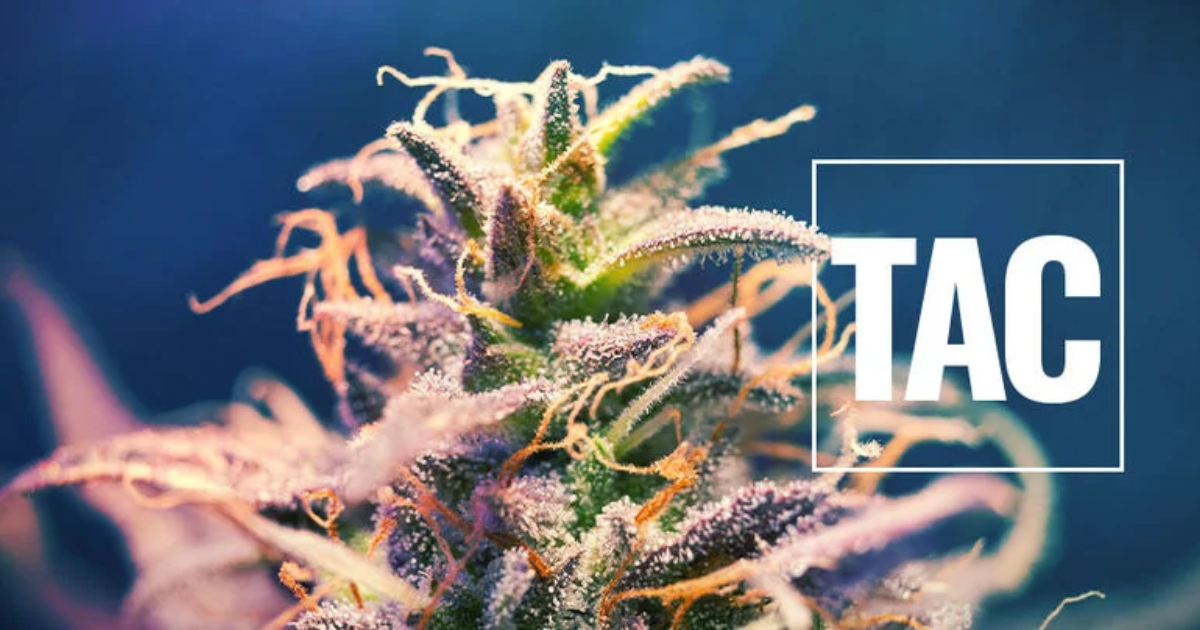When diving into the world of cannabis, you might come across various terms and abbreviations. One term that often confuses new users is “TAC.” So, what is TAC in weed, and why should you care? Let’s break it down in simple terms.
Understanding TAC: Total Active Cannabinoids
TAC stands for Total Active Cannabinoids. It’s a measure used to understand the overall potency and therapeutic potential of a cannabis strain. While many people are familiar with THC (tetrahydrocannabinol) and CBD (cannabidiol), TAC provides a broader perspective on the combination of cannabinoids present in the plant.
Cannabinoids are chemical compounds found in cannabis that interact with the body’s endocannabinoid system. This system helps regulate various physiological processes, such as mood, appetite, and pain perception. THC and CBD are the most well-known cannabinoids, but there are many others, including CBG (cannabigerol), CBN (cannabinol), and THCV (tetrahydrocannabivarin), each with its unique effects.
Why TAC Matters
- Comprehensive Potency Indicator: TAC gives you a clearer picture of a strain’s overall potency. While THC is often highlighted on cannabis packaging, a high TAC indicates that other cannabinoids contribute to the strain’s effects. For example, a strain with a high TAC might offer a balanced experience that includes both uplifting and relaxing effects, thanks to the combined influence of various cannabinoids.
- Tailored Effects: Understanding TAC can help users select strains that better match their needs. For instance, if you’re seeking relief from pain or anxiety, a strain with a high TAC and a balance of THC and CBD might be more effective. On the other hand, a strain with a high TAC and dominant THC might be preferred for recreational use.
- Entourage Effect: The “entourage effect” refers to the theory that cannabinoids work better together than in isolation. A high TAC suggests that multiple cannabinoids are working in synergy, potentially enhancing the overall therapeutic effects. This means that the combined effects of THC, CBD, and other cannabinoids might be more pronounced than if you were using just THC alone.
How to Read TAC on Cannabis Labels
When you look at a cannabis label or lab report, you’ll often see TAC listed as a percentage. This percentage represents the total amount of active cannabinoids in the strain. For example, if a strain has a TAC of 25%, it means that 25% of the total weight of the cannabis is made up of active cannabinoids.
Here’s a quick guide on how to interpret TAC:
- Low TAC (Below 10%): Strains with a low TAC might have a milder effect and are often suitable for users who prefer a subtle experience or are new to cannabis.
- Moderate TAC (10-20%): Strains in this range offer a balanced experience and are popular among both recreational and medicinal users.
- High TAC (Above 20%): High TAC strains are potent and can produce strong effects. They are often preferred by experienced users seeking more intense experiences or targeted relief.
Factors Influencing TAC
Several factors can influence the TAC of a cannabis strain:
- Genetics: The genetic makeup of the cannabis plant plays a significant role in its cannabinoid profile. Different strains have different cannabinoid concentrations due to their unique genetic traits.
- Cultivation Methods: The way cannabis is grown can impact its TAC. Factors like light, nutrients, and growing conditions can affect cannabinoid production. For instance, plants grown in optimal conditions with the right nutrients are likely to produce higher TAC levels.
- Harvesting and Processing: When cannabis is harvested and processed can also influence its TAC. Harvesting too early or too late can affect cannabinoid levels. Additionally, the curing and drying process can impact the final TAC of the cannabis.
TAC vs. THC and CBD
While TAC gives you a broader view of a strain’s cannabinoid content, it’s essential to understand how it relates to THC and CBD:
- THC (Tetrahydrocannabinol): THC is the primary psychoactive cannabinoid in cannabis. It’s responsible for the “high” sensation and can influence mood, pain, and appetite.
- CBD (Cannabidiol): CBD is non-psychoactive and is known for its therapeutic properties, such as reducing anxiety and inflammation without causing a high.
TAC includes both THC and CBD, along with other cannabinoids. By understanding TAC, you can get a more comprehensive view of how these cannabinoids work together in a strain.
Conclusion
In summary, TAC, or Total Active Cannabinoids, provides valuable insight into the overall cannabinoid profile of a cannabis strain. It helps users understand the combined effects of various cannabinoids, guiding them in choosing strains that meet their needs. Whether you’re seeking therapeutic benefits or a recreational experience, paying attention to TAC can enhance your cannabis experience.
By understanding TAC, you can make more informed decisions and tailor your cannabis use to fit your preferences and requirements.

